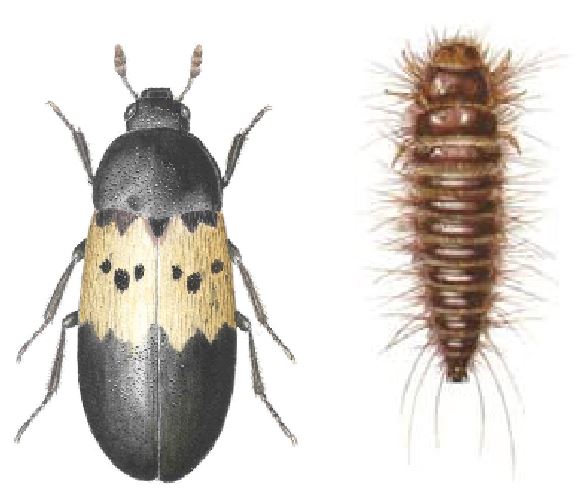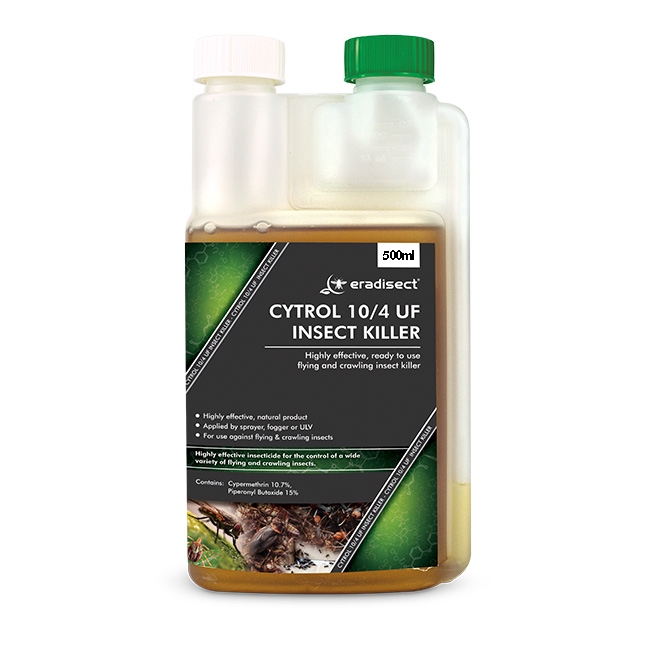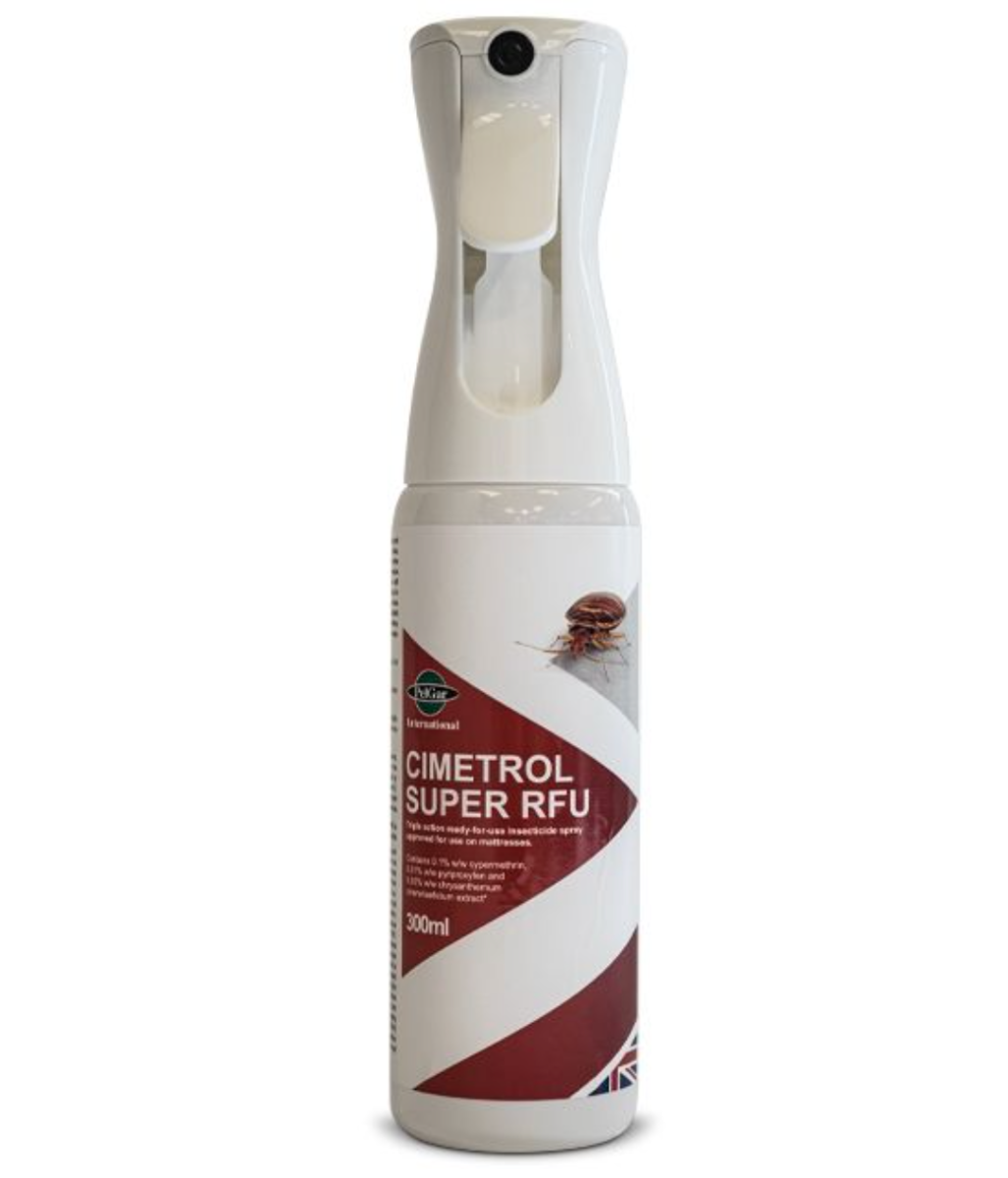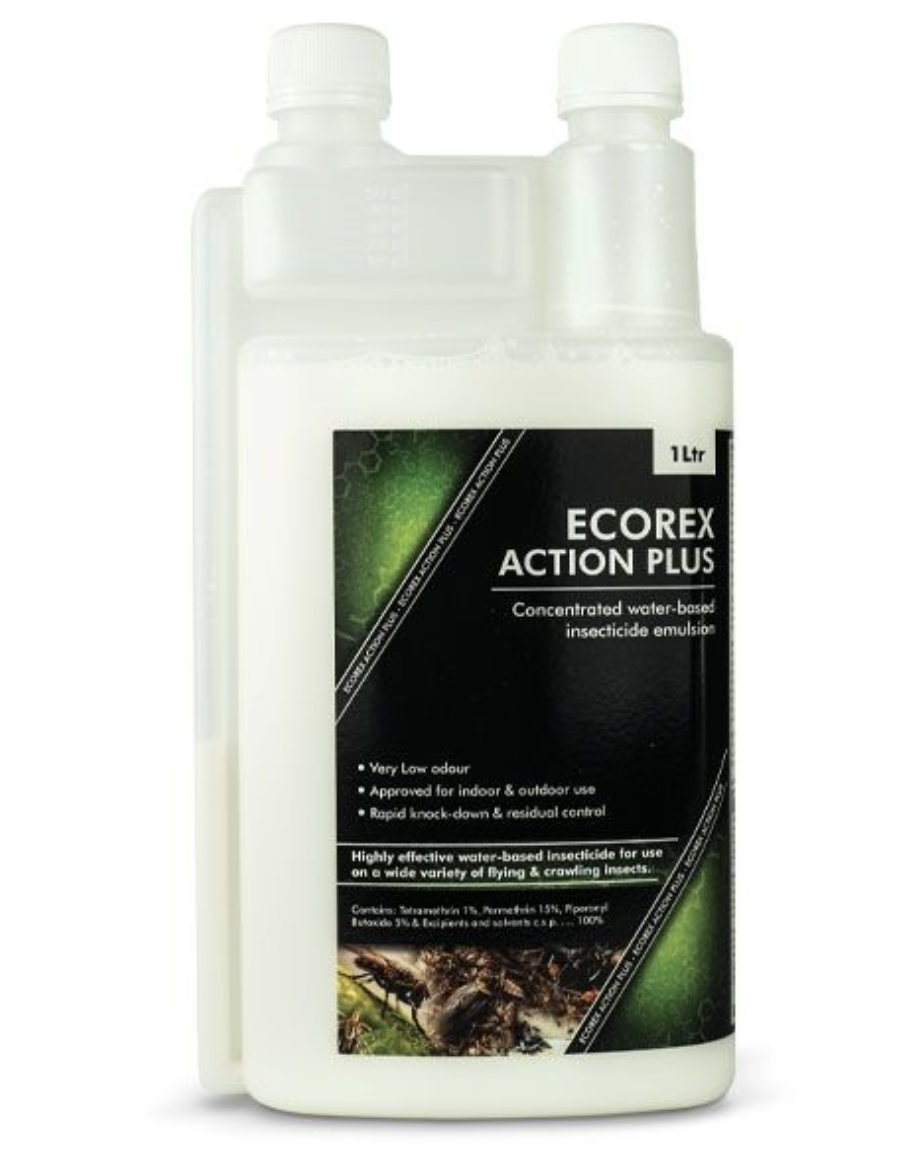Larder Beetle (Bacon Beetle) (Dermestes lardarius)
Larder Beetle (Bacon Beetle) (Dermestes lardarius)
 |
 |
Identification:
Adults, 7-9mm in length, oval-shaped body. Black with a light coloured band across the wing covers. There are several dark spots in the buff area. Larvae are yellow brown and cylindrical, covered with dense hairs. Larvae reach a length of 20 mm at maturity. The larvae of this species can be distinguished from the other dermestid beetle larvae by the presence of two downwardly curved spines at the tip end of the abdomen. It is a member of the beetle group called dermestid beetles.
Biology:
The adult female beetle lays up to 200 eggs. After about a week the whitish eggs hatch into caterpillar-like larvae, which are covered with tufts of bristle-like hairs. The larvae are often referred to as "woolly bears". After some time the larva forms a pupa from which the adult beetle eventually emerges. The complete lifecycle takes about 2 to 3 months and the adult beetles can live for up to a further 3 months. The larvae require a high protein diet and feed on materials of animal origin.
Control:
The first step in controlling larder beetle infestations is locating the food source. Both larvae and adults tend to travel long distances, inspect kitchen cupboards, shelves and spaces under and behind ovens and refrigerators. Store rooms where animal feed is stored should be inspected. Roof spaces and basements should be checked for the presence of dead rodents, birds, or insects. All infested material should be removed and the area vacuumed and the contents of the vacuum cleaner should be disposed of in an outside bin. Uninfested foods should be stored in tightly sealed insect proof containers. Larder beetles are particularly prone to inhabit areas of dead cluster flies. Treat the infested areas using a residual insecticide labeled for crawling insect to ensure that all adult beetles and larvae have been killed.
Products to control Larder Beetle:
|
Cytrol 10/4 (500ml) |
Cimetrol Super RFU (300ml) |
Ecorex Action Plus (1L) |



